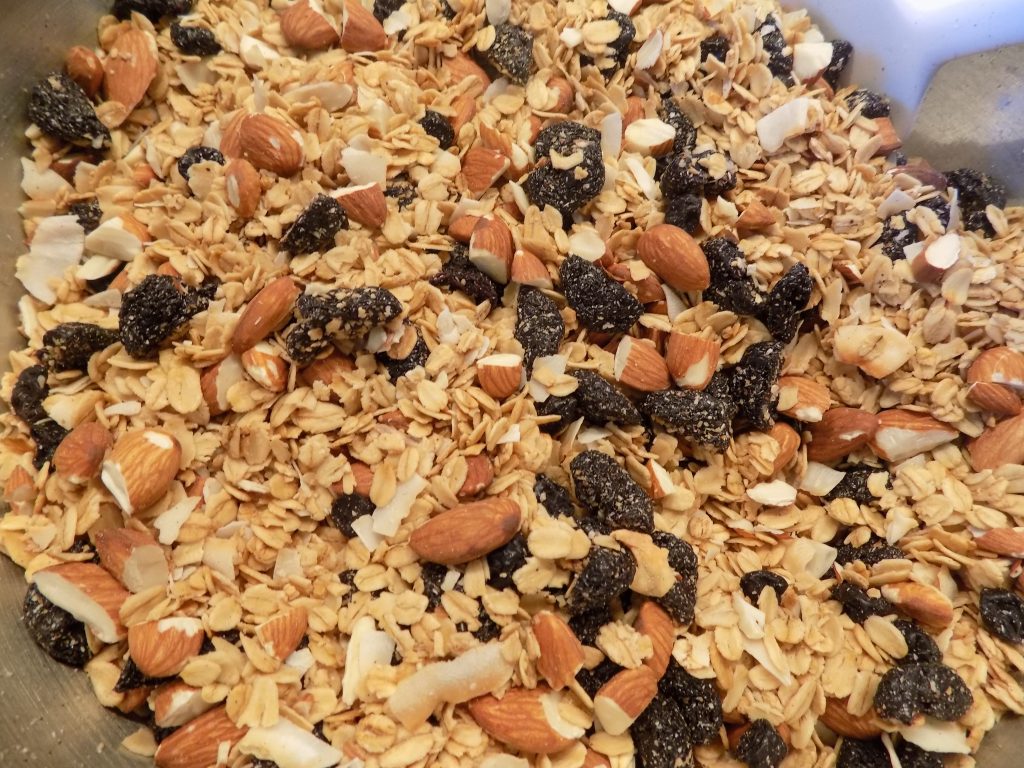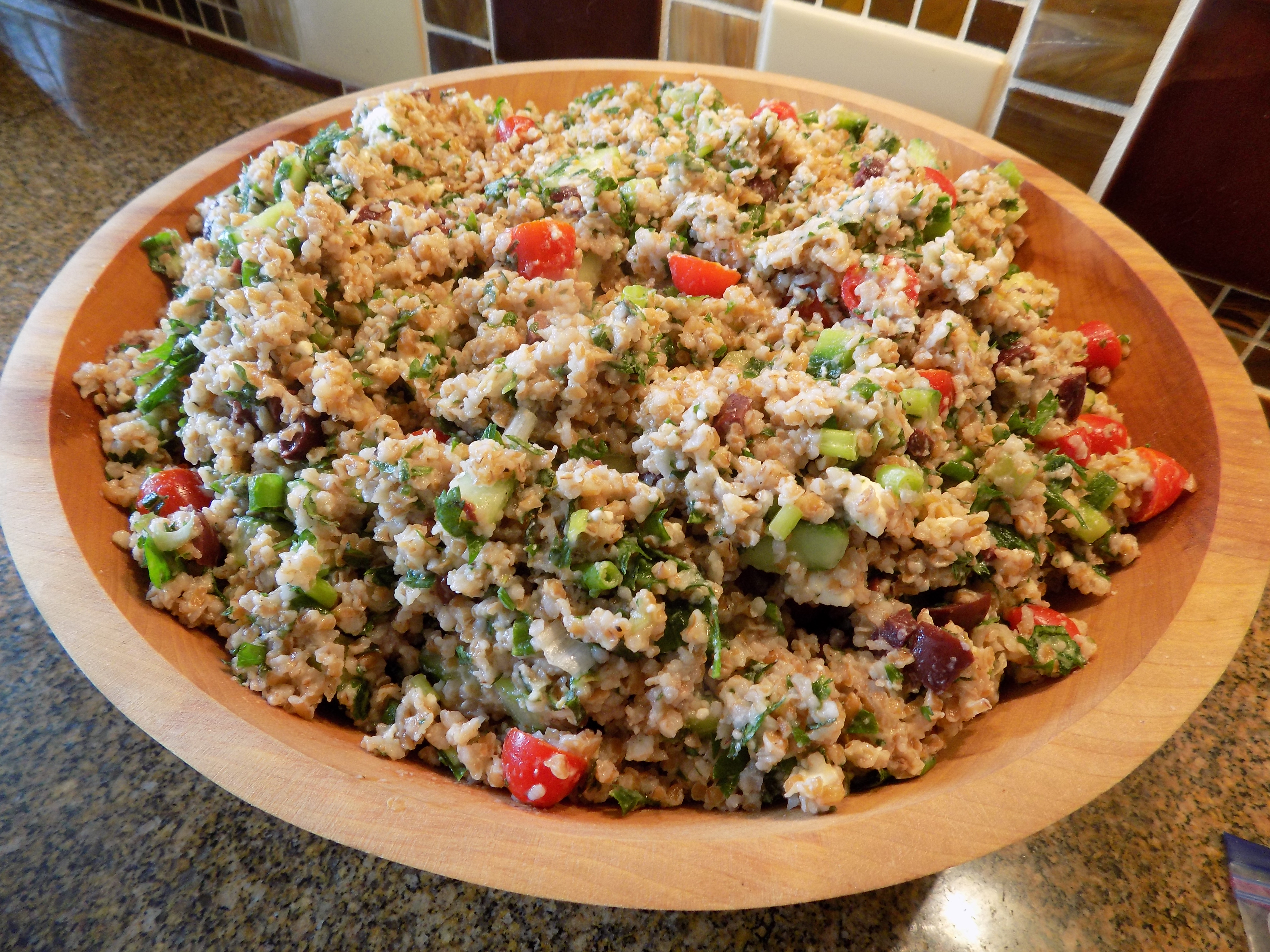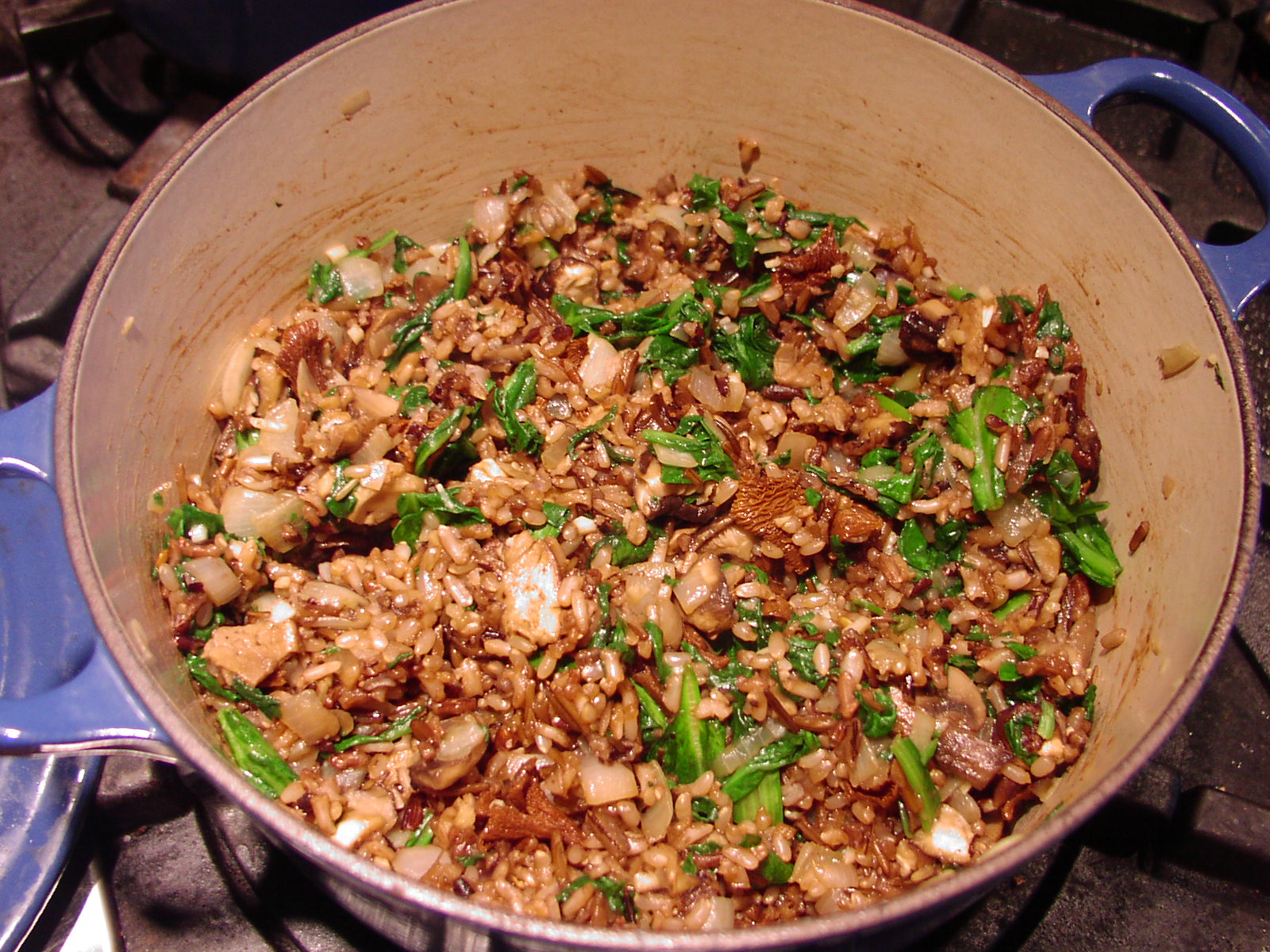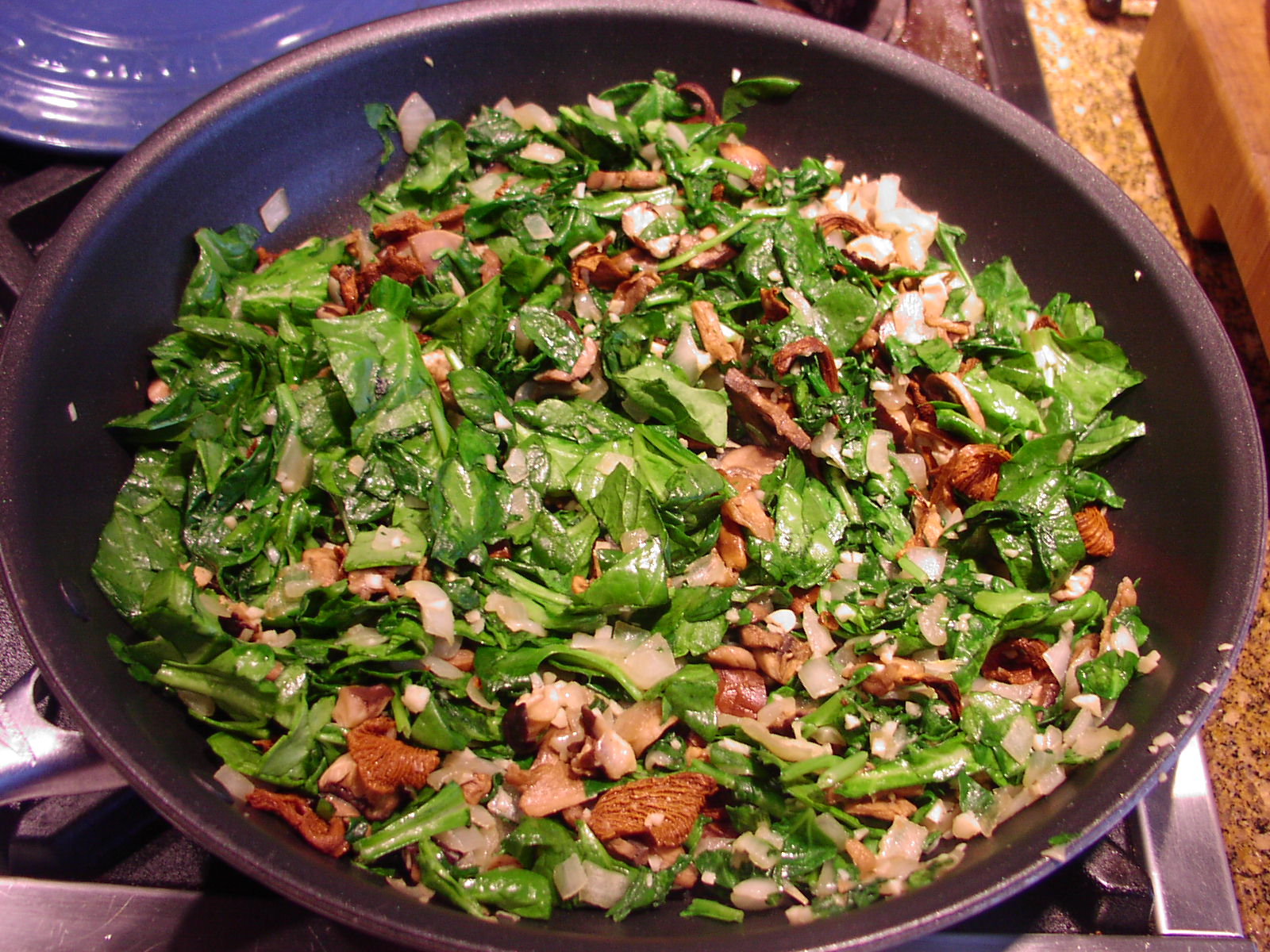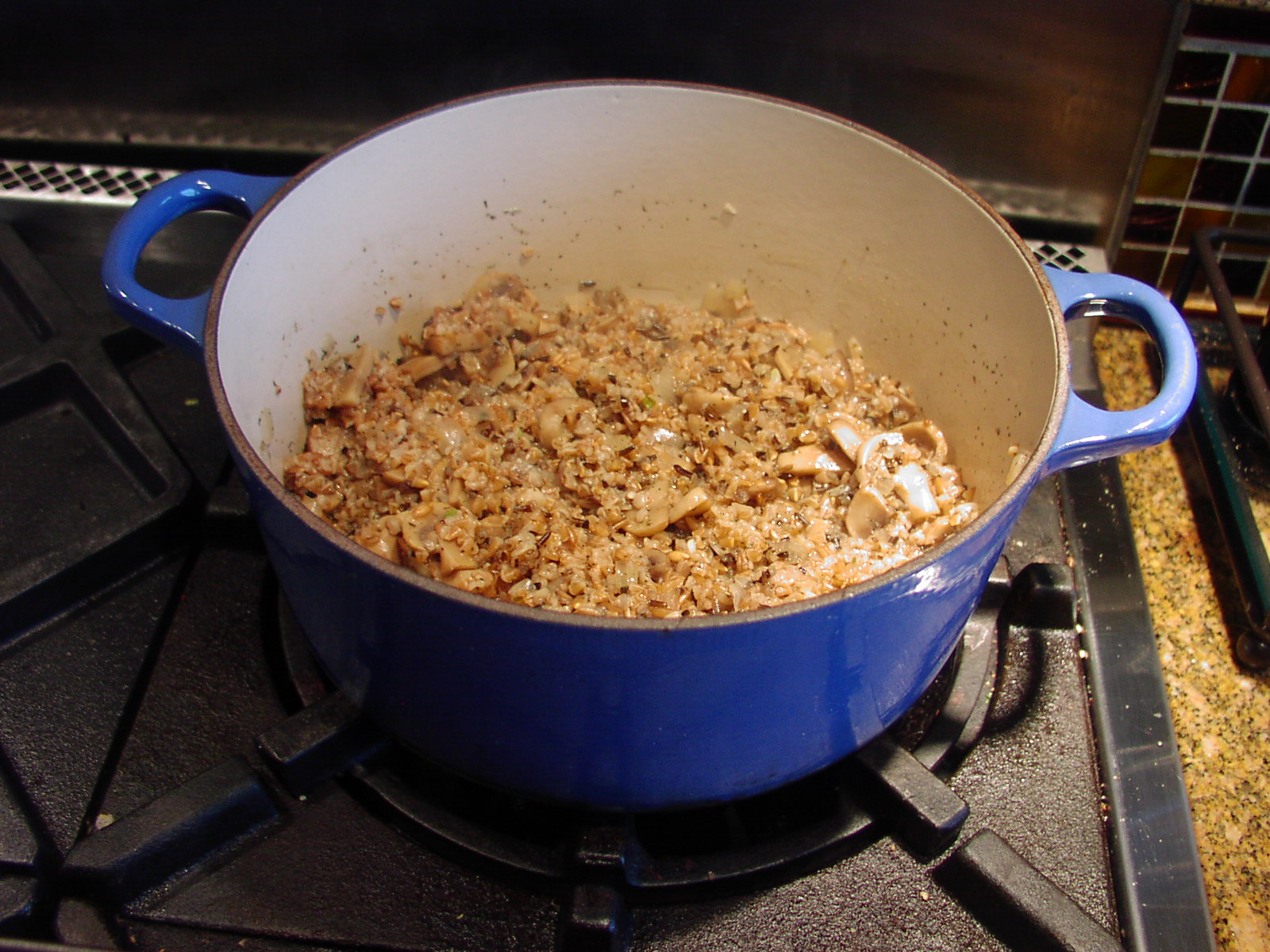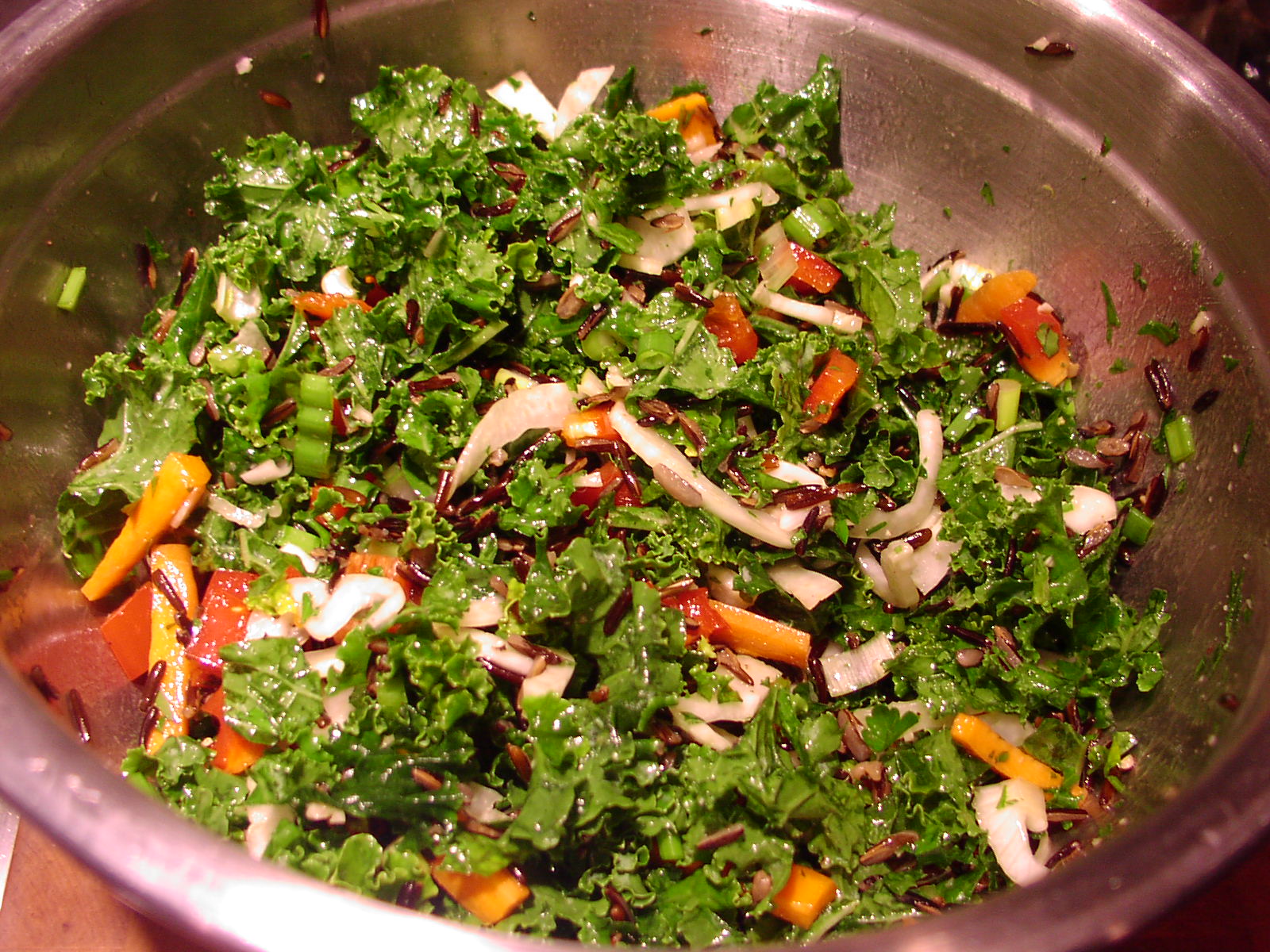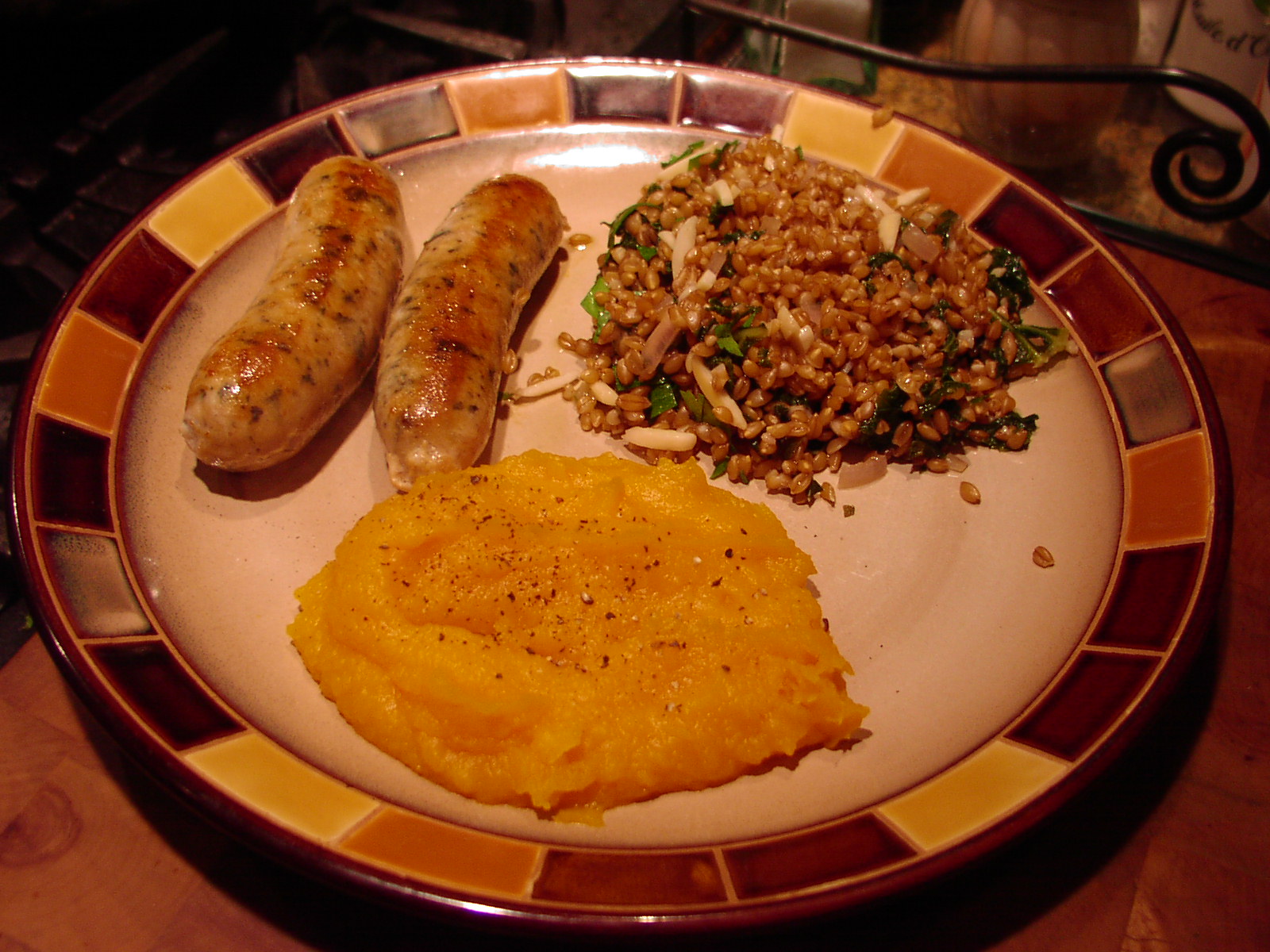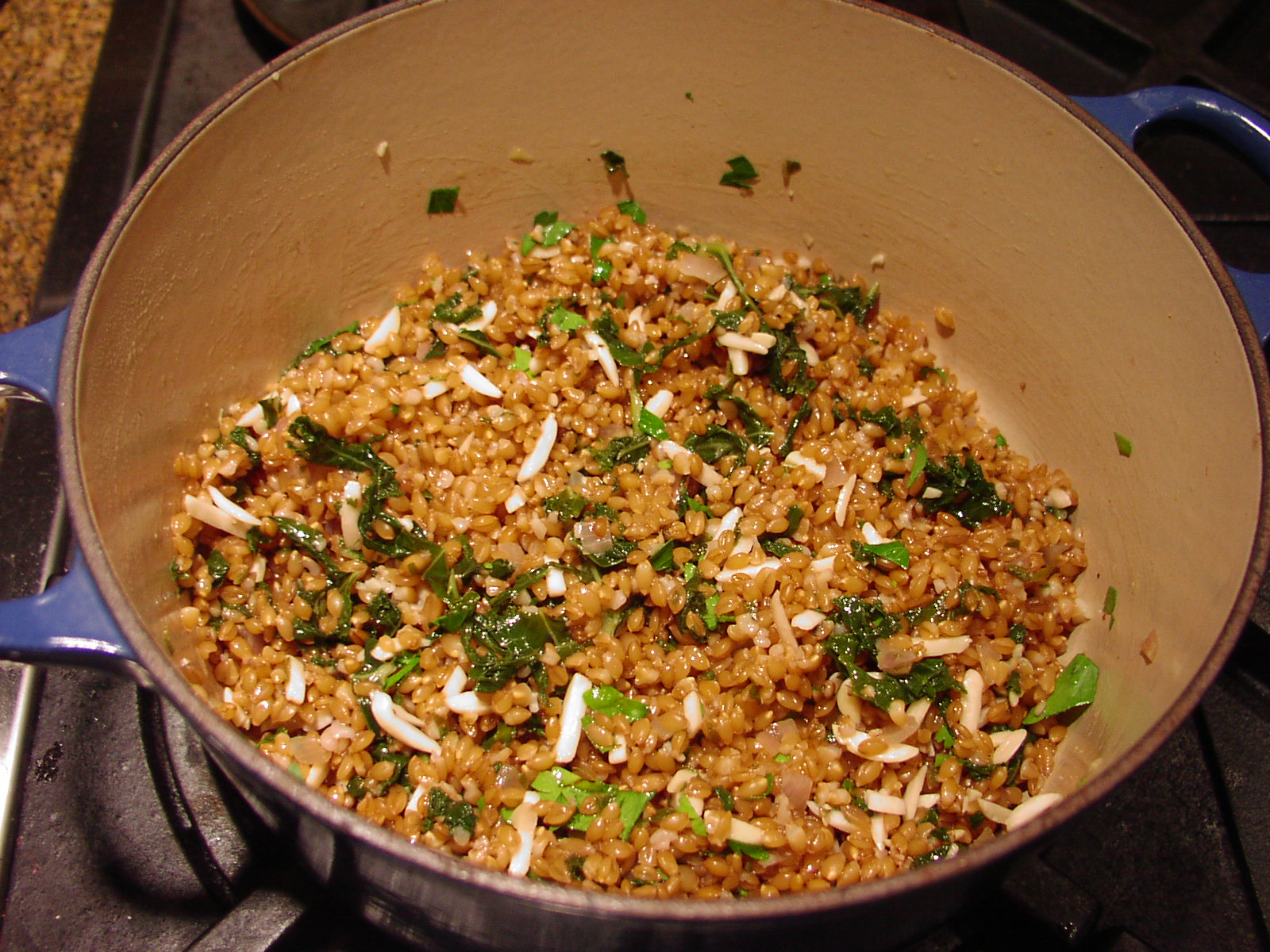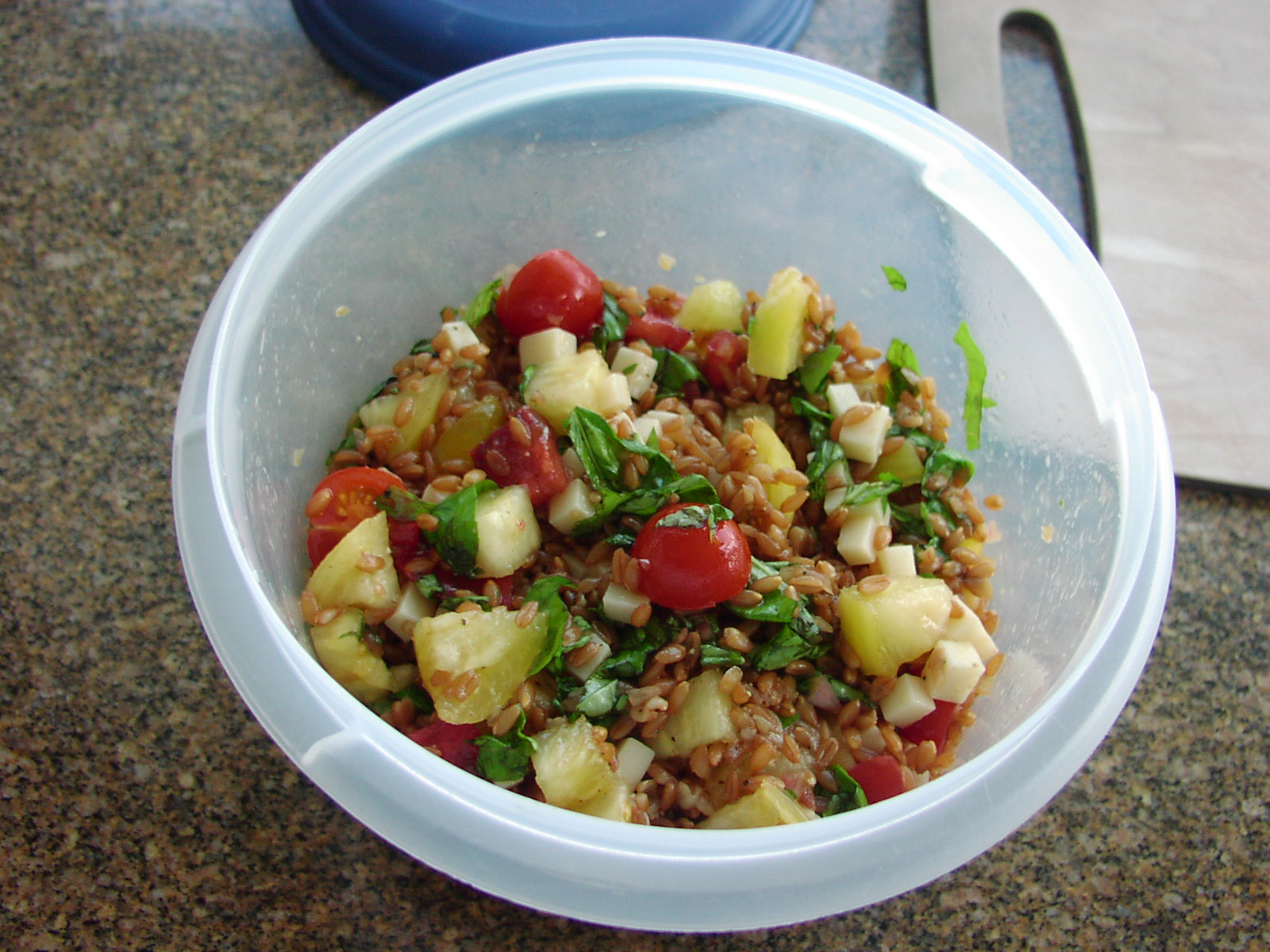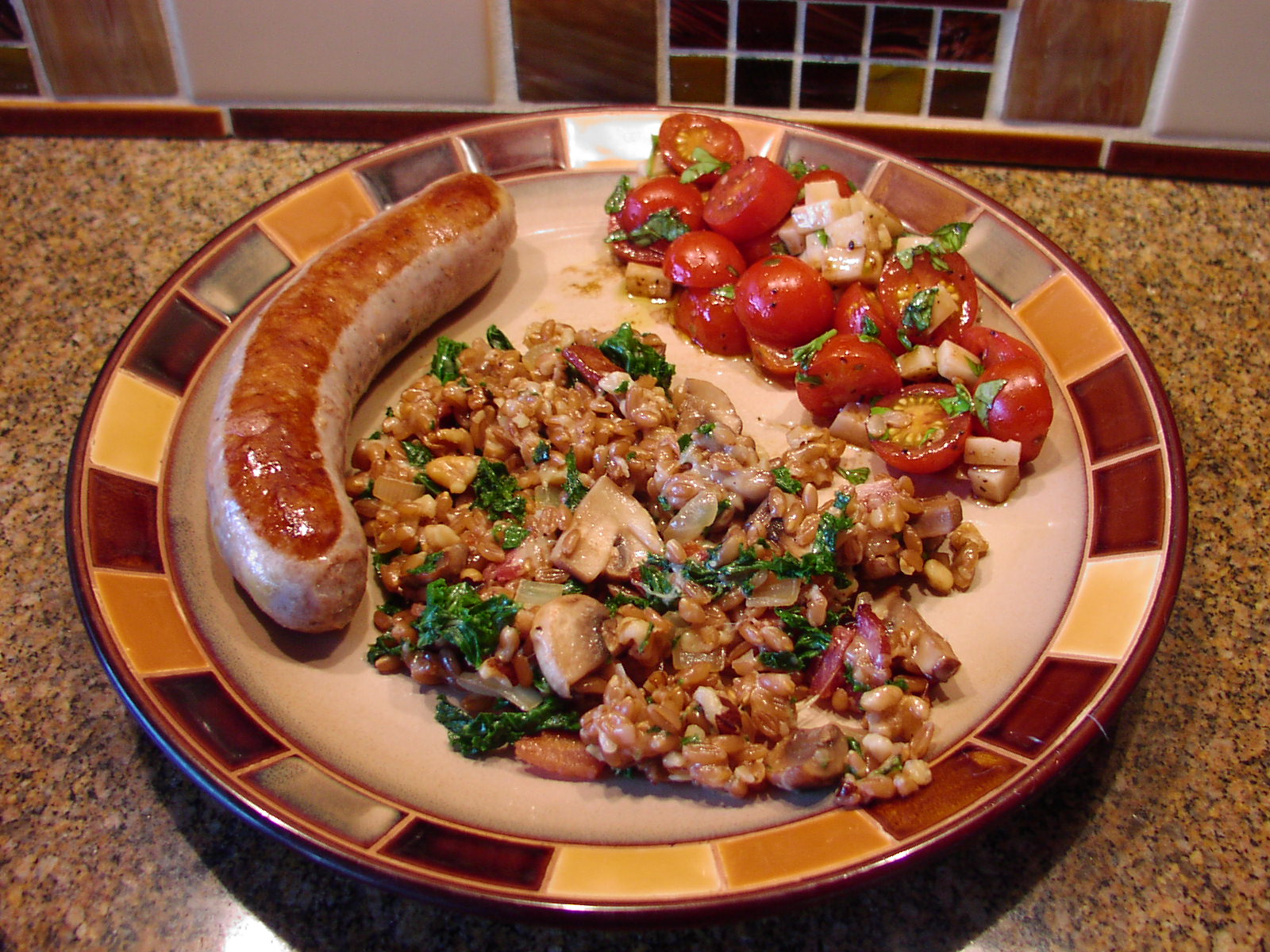
Instead of writing a witty and charming introduction to this delicious and healthy side dish, I decided to put my teacher hat on and help educate you on the seductive, magnificent and healthy charms of the lowly button mushroom. Now I know we all love the exotic mushrooms for their flavor and versatility, but the common everyday white mushroom found in every produce market in America is actually the nutritional star of the entire mushroom show. Who knew?
So please join me in celebrating what is now commonly referred to as the new superfood. I hope you find the information about button mushrooms as fascinating and informative as I did.
- 5 c. water
- 1 c. emmer farro (I use Bluebird Grain Farms)
- pinch of kosher salt
- 2 tsp. extra virgin olive oil
- 2 thick and meaty slices bacon, cut into small pieces
- ½ medium yellow onion, diced
- 8 oz. thinly sliced button mushrooms* (about 12 good sized mushrooms)
- 2-3 garlic cloves, minced
- freshly ground black pepper
- 2 c. chopped kale
- 2 oz. finely grated Parmesan (about 1 cup loosely packed)
- ½ c. toasted coarsely chopped walnuts
Place the water, emmer farro, and a pinch of kosher salt in a covered pan. Place on high heat and bring to a boil. Boil for 5 minutes, stirring frequently. Reduce heat, cover and simmer for about 35 minutes or until berries are plump and chewy. When the farro is done, drain off excess liquid and set aside.
Meanwhile, add the olive oil to a large sauté pan and fry the bacon until crisp. When the bacon is done, remove from pan and drain on paper towels. Do not discard the bacon grease. Add the onion and mushrooms to the pan and sauté until the onion is transparent and the mushrooms are lightly browned, about 4-5 minutes. Add the garlic, black pepper, and kale that has been massaged for about 3 minutes with just a light sprinkle of kosher salt. (For more information about massaged kale, see my blog entitled Lettuce Talk Salad (Vinaigrettes too). Stir fry for about 1 minute. Add the cooked farro and heat until warmed through. Remove pan from heat and add the cheese, reserved cooked bacon, and the toasted walnuts. Adjust seasoning and serve anywhere from hot out of the pan to room temperature.
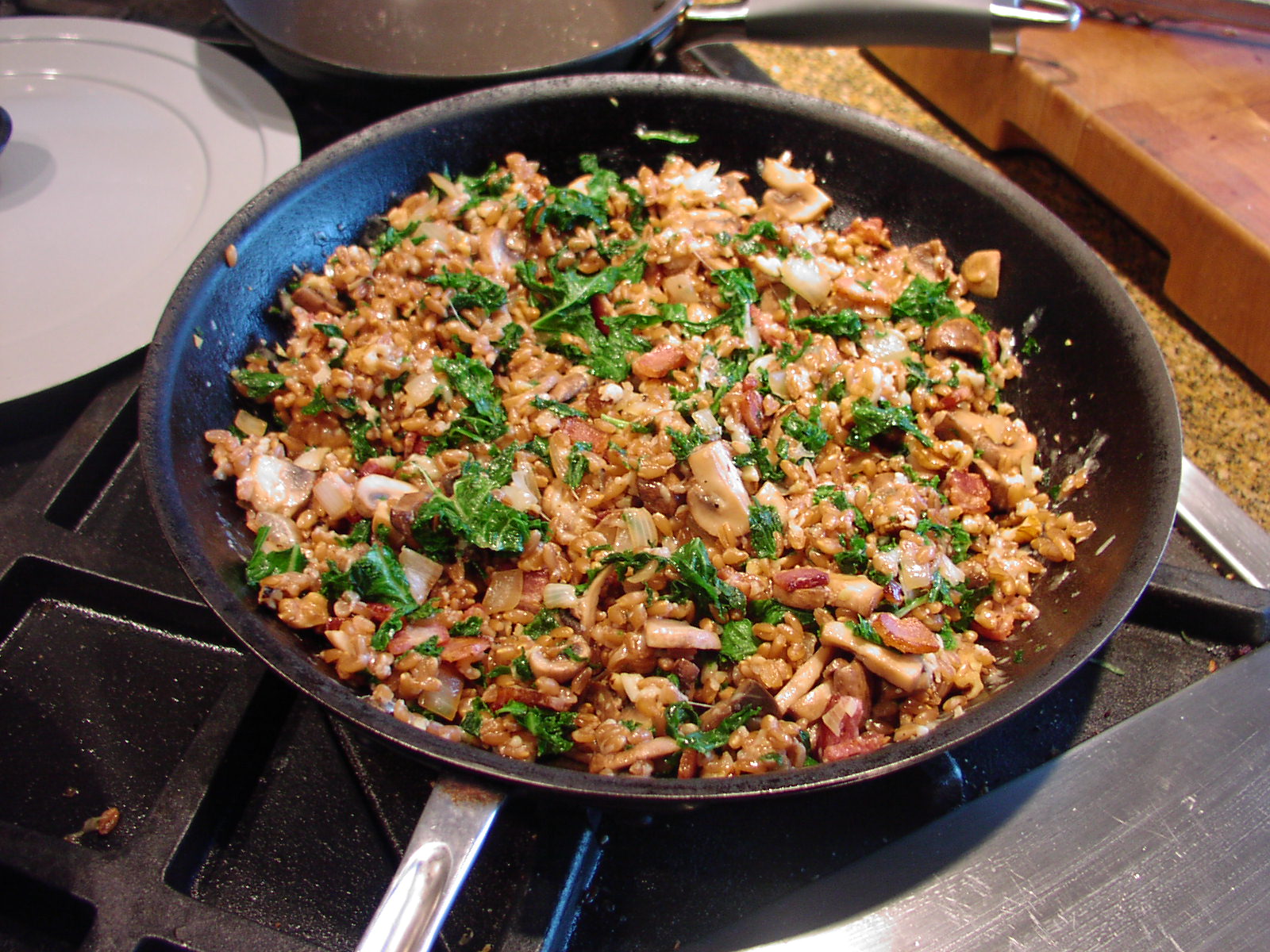
*Button Mushrooms
The following paraphrased information about button mushrooms, now commonly referred to as “superfood” was compiled by leading nutritionist Jane Clarke.
“We’ve always known that mushrooms are tasty, versatile and satisfying, but they have been somewhat in the shadow of more colorful and exotic fruits and veggies. This new report now allows mushrooms to take center stage as a superfood.
Research has shown that cultivated mushrooms contain biologically active compounds, which scientific studies suggest may have the potential to help fight cancer and heart disease and improve well being, although more research is needed in this area.
The report summarizes results from major scientific studies from around the world into the nutritional value and potential health benefits of Agaricus bisporus mushrooms. This species accounts for 95 per cent of mushroom sales and includes white button mushrooms and brown mushrooms (crimini and portabello). Studies at the Beckman Research Institute of the City of Hope in Duarte, California, suggest that fresh white mushrooms contain substances that are effective in reducing the activity of the enzyme aromatase that increases oestrogen levels. High oestrogen levels have been implicated in breast cancer risk. Initially, extracts from seven vegetables – onion, celery, carrot, pepper, broccoli, spinach and mushroom were tested. The most effective aromatase inhibitor was found in white mushrooms. The study’s second phase tested only portabellos, shiitake, crimini, oyster, enoki, woodear, chanterelle, small white and large white mushrooms. The large white mushrooms emerged as the most potent inhibitor of aromatase activity.
A series of experiments has been carried out to investigate the effects of white button mushrooms in relation to prostate cancer and suggested that they may play a chemo-preventive role. Research at the City of Hope Medical Center showed that two phytochemicals found in white button mushrooms had the ability to suppress two enzymes – steroid 5alpha-reductase and aromatase – which have been implicated in the incidence of prostate cancer.
Mushrooms are a prime natural source of the powerful antioxidant L-Ergothioneine, outdoing either of the two foods previously believed to be better sources. Led by Professor Robert Beelman, researchers at Pennsylvania State University found that just a handful of white button mushrooms have about 12 times more of the antioxidant than wheat germ and four times more than chicken liver. Brown mushrooms contained even more and exotics had the highest levels. L-Ergothioneine scavenges free radicals and protects the body’s DNA from damage. As a result of this research, the university advocated that white mushrooms be elevated to ‘superfood’ status.
Studies have also suggested that substances found in white mushrooms have the ability to lower blood cholesterol levels and so may be able to reduce the risk of cardiovascular disease. They are a valuable source of lovastatin, which has been found to suppress the activity of the main cholesterol synthesis enzyme. Mushrooms are a good source of fibre, in particular glucans giving them the potential to impact cholesterol uptake from the diet.
White mushrooms are a significant source of selenium, providing 15% RNI for women per 100g. This trace mineral has received increasing attention as a potential cancer preventive, possibly through antioxidant protection and/or increased immune function.
White mushrooms are also a fantastic source of riboflavin, B2, (providing 28.2% RNI for women per 100g), potassium (9% RNI) and copper (60% RNI) and contain comparable amounts of protein (4% RNI for women), thiamin, B1, (11.2% RNI for women), niacin (24.6% RNI for women) and folate (22% RNI).”
And while I was researching foods known to help with inflammation, I read that eating mushrooms is a healthy choice because of their ability to provide us with unique immune system support. And the common button mushroom leads the pack in terms of immune system benefits and the reduction of inflammation.
Finally, according to the super foods rx web site – “Avoid eating mushrooms raw, even if they are on the salad bar that way. Since mushrooms have thick cell walls that break down with cooking, cooking unlocks more nutrients and safely degrades any trace amount of a potentially carcinogenic compound called agaritine. Finally, mushrooms are often grown on manure. While the manure is sterilized, it is always better to cook mushrooms.”
